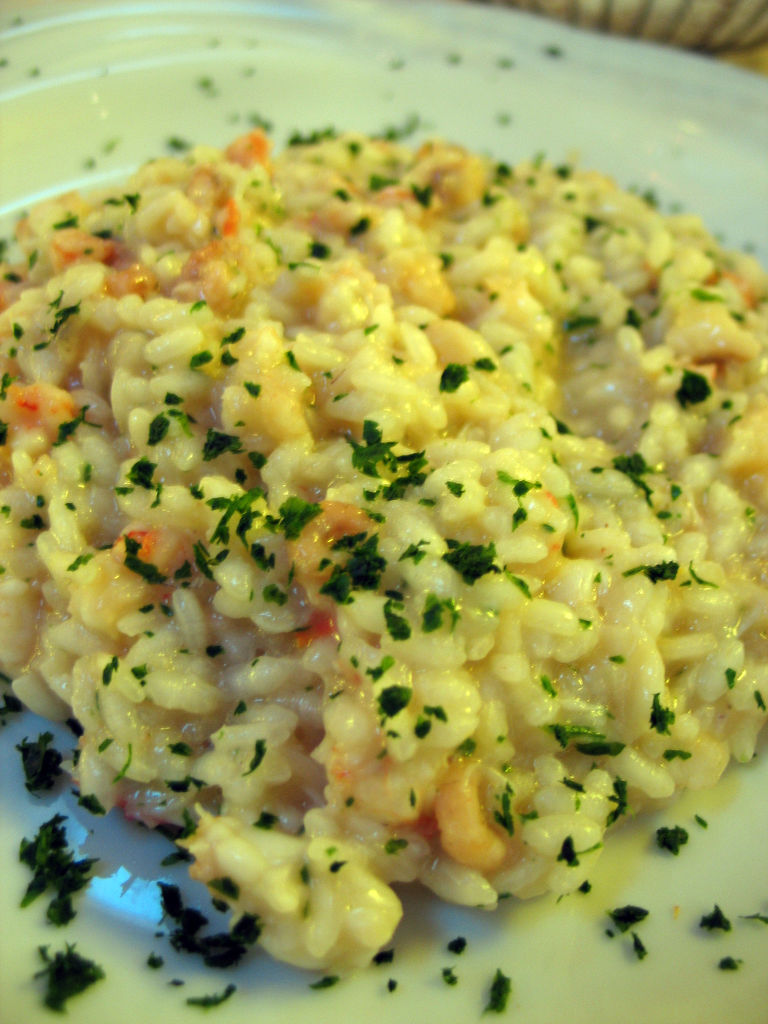In many parts of Africa, carnivores such as lions and wild dogs still come into frequent conflict with pastoralist communities such as the Maasai because of their attacks on their cattle and goats. This naturally results in a tension between the aims – and indeed the practitioners – of wildlife conservation and of rural development that does no good to either camp. So it is interesting to read of a study which looked at how to foster co-existence between people, domesticated animals, and large predators. The paper identifies improvements to traditional livestock management, as well as other measures, that can contribute to wild carnivore conservation by minimizing the risk to livestock.
Rice in Italy
 No, not Condy Rice seeing the sights: rice the crop, and its future in Italy. It may surprise some people that rice is grown in Italy, but it has a long history of cultivation in the Po Valley, and an important place in the local cuisine, as anyone who has eaten risotto will testify. Unfortunately, the ongoing drought in the region is causing severe problems for thousands of rice farmers (among others) in the Val Padana. Some people are saying that’s the shape of things to come, with climate change and all. But here’s an interesting juxtaposition of news: it’s been announced that the Slow Food Foundation for Diversity, based in Tuscany, is to start marketing in Europe a traditional, organically grown, Filipino rice known as “unoy.” Isn’t globalization wonderful?
No, not Condy Rice seeing the sights: rice the crop, and its future in Italy. It may surprise some people that rice is grown in Italy, but it has a long history of cultivation in the Po Valley, and an important place in the local cuisine, as anyone who has eaten risotto will testify. Unfortunately, the ongoing drought in the region is causing severe problems for thousands of rice farmers (among others) in the Val Padana. Some people are saying that’s the shape of things to come, with climate change and all. But here’s an interesting juxtaposition of news: it’s been announced that the Slow Food Foundation for Diversity, based in Tuscany, is to start marketing in Europe a traditional, organically grown, Filipino rice known as “unoy.” Isn’t globalization wonderful?
Photo from ciordia9 on Flickr provided under a Creative Commons license.
Wikiseedia: what is it?
 There’s a long and detailed message from the folks at WorldChanging about something they call SeedPOD. It isn’t clear exactly what this resource will be. A sort of information exchange, but also a network for exchanging seeds and maybe too a platform for sharing experiments and results in more sustainable agriculture. As they describe it:
There’s a long and detailed message from the folks at WorldChanging about something they call SeedPOD. It isn’t clear exactly what this resource will be. A sort of information exchange, but also a network for exchanging seeds and maybe too a platform for sharing experiments and results in more sustainable agriculture. As they describe it:
an imagined toolkit to keep seeds moving, farmers thriving and communities fed in the face of massive environmental change. Perhaps it will trigger some interesting thinking out there: at very least, we hope you find it briefly diverting.
All this seems to be organized through something called the Wikiseedia, but as far as I can see there is no link to this fabulous beast. Go to www.wikiseedia.com, however, and you see a bare bones installation of a wiki (a special kind of web site that anyone can contribute to and edit) that contains no content (yet?) and that has not been changed since 5 March 2007. WorldChanging’s post is dated 27 April.
There’s something happening out there. What it is ain’t exactly clear. But it will bear watching. At least, I hope it will, because it sounds really exciting.
Traditional Knowledge Newsletter
The first issue of Pachamama, the Convention on Biological Diversity’s newsletter on traditional knowledge issues, is out. I found the article on sacred sites particularly interesting. Though agricultural biodiversity is unfortunately not mentioned explicitly, the author, Erjen Khamaganova, does say that:
Preservation of sacred sites is a key way to restore traditions of a healthy way of life, healthy diet and healthy habits in forms that are unique and suitable for each region and each indigenous nation.
Do intellectual property rights threaten traditional knowledge and livelihoods?
One reason to blog this is that I am intrigued by the headline. The subject is an interim report published by IIED, the International Institute for Environment and Development, an organisation I have long admired. The report is called Protecting Community Rights over Traditional Knowledge: Implications of Customary Laws and Practices, and was issued last November in time for the WIPO meetings in December 2006. I’ve picked it up now because it popped up at Eldis, which, I think, added the title I’ve stolen for the headline above.
What I really want to know, of course, is the answer to that (perhaps rhetorical) question.